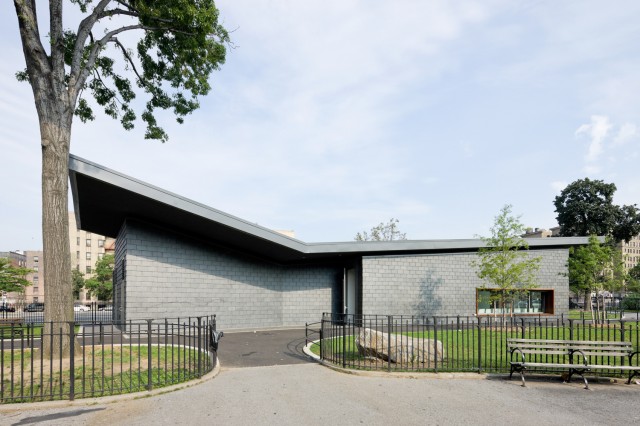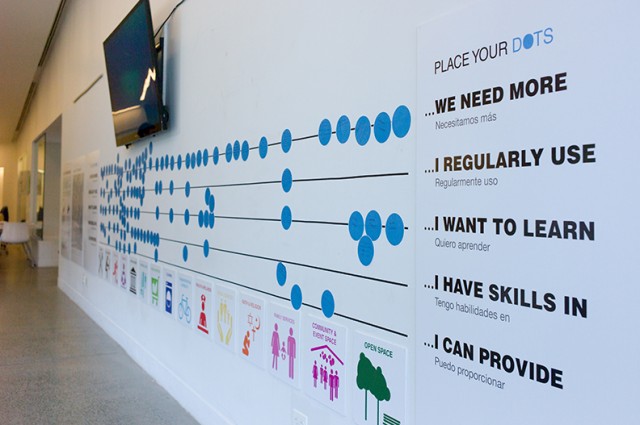A resident of the midsection of the Bronx walks into the one-room visitors center at Poe Park, looks around at the near-empty space and says, Can I offer my talent here?
This is how it happens at the Poe Park Visitors Center, a narrow outfit with a modern design facing the poet’s historic, gothic cottage in his namesake park. Since this quiet facility opened in May 2012, a flurry of neighbors have offered up their skills for free.

Classical music performances, comic book art exhibits, yoga classes, nonfiction story-telling workshops, and other work has arisen out of these simple walk-ins.
“I think the ambience here kind of brings that out more,” said Lucy Aponte, who oversees the center. “People see it’s a creative place, you know? It seems to be drawing a lot of creative people. That’s what’s happening.”
Activity at the center had a slow start, with the space not opening until about two years after construction finished, and with a shortage of funding to staff it full-time before the Parks Department took it over. While community groups struggled to figure out how to breathe life into it, life happened.
But that phenomenon was seen as a springboard. One of the center’s designers has jumped back in this summer with a low-tech wall installation designed to escalate this trend.

“We’re trying to encourage even more activity,” said Landon Brown, Director of Vision Arc, a branch of Toshiko Mori Architect, which the Mayor’s Office commissioned to design the center.
Vision Arc’s bureaucratic sounding “Community Mapping Initiative” is akin to a bulletin board. Instead of pins, though, it allows visitors to write their own skills, suggestions or neighborhood needs on paper circles and stick the writing on the wall.
Visitors added to the wall, “I want to learn more English and practice my pronunciation,” “want to give a pasta class,” suggestions for Citibike in the Bronx — and the ideas kept coming.
Brown says the wall is not to just bring in ideas for the space but ideas for the community at large.
“A big shift that’s happening right now in the design community and certainly beyond is asking what is the role of design in addressing systemic challenges.”
Here are some examples of the turnout, provided by Landon Brown.
We Need More…
(Social Services) “A fathers support program for fathers that are bringing up their kids alone”
I Regularly Use
(Food & Nutrition) “Green Market at the New York Botanical Garden”
I want to Learn…
(Skills Training) “To practice my pronunciation”
(Health & Wellness)
“CPR Training & First Aid,” “Deep Breathing, Tai Chi, Yoga”
I Have Skills In…
(Skills Training) “Math tutoring”
I Can Provide…
(Arts & Culture) “…teaching Manga cartoon workshops to introduce Japanese youth culture,” “Craft restoration of furniture…”
The Community Mapping Initiative at Poe Park is part of a wave of community collaborative platforms, which is part of a broader trend called ‘the sharing economy.’ OurGoods.org and Trade School, both founded in NYC, and Yerdle, founded in San Francisco, are online projects with similar goals of opening new pathways from one user to the next, and Change by Us is like a community bulletin board for NYC, for creating participatory projects.
Read more about Poe Park in the New York Times, and about the design via architect Toshiko Mori.